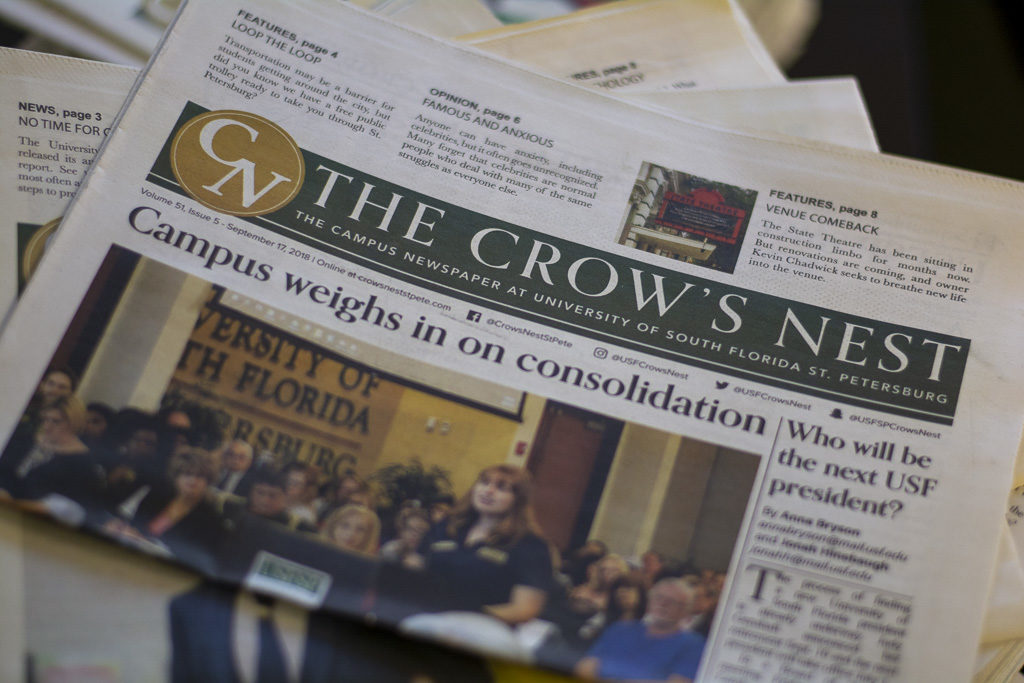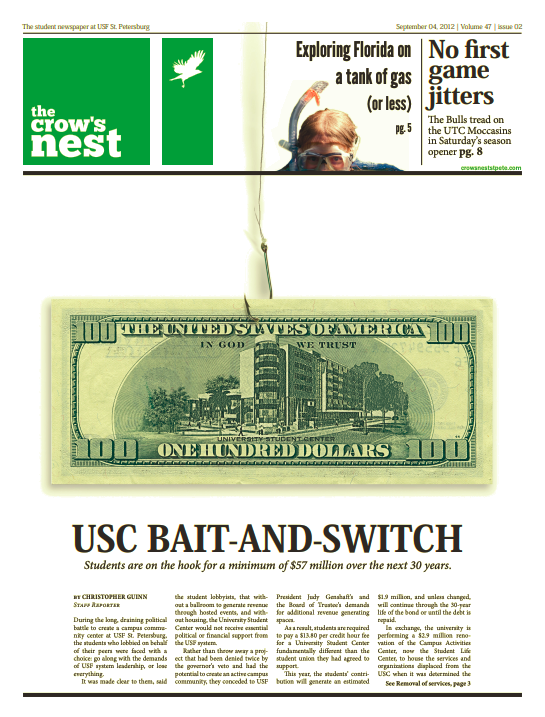
Emily Wunderlich | The Crow’s Nest
By Emily Wunderlich
Ten staff members. Thirteen issues a semester. Eight pages a week.
Our readers only see the finished product. So here’s a rundown on how we do it.
The week begins with our Monday meetings.
Editors pitch and assign stories, and contributors set out to complete them with a Friday deadline. (But, realistically, we don’t get most of our submissions until Saturday or Sunday.) The visuals editor also coordinates which photos will go with each story, along with who will shoot them.
Throughout the week, editors will reach out to the contributors in their section to make sure their stories are going well. Sometimes, sources will be hesitant in getting back to us. Other times, events will be rescheduled or canceled altogether.
When this happens, we either assign a new story or use one that hasn’t been published yet. (In journalism-speak, we call these our “evergreen stories,” since they’re not time-sensitive.)
Thursdays are when we meet with our adviser, Rob Hooker, who critiques the previous week’s edition and offers insight about the upcoming one. This is when we establish which stories will be best suited for the front and color pages.
Over the weekend, editors begin the first read-throughs of their contributors’ stories, checking for accuracy, clarity and readability. If a story is missing quotes, photos or captions, they follow up to get those issues addressed before Sunday.
Sundays are the busiest — and most important — days for the paper. This is when stories and page layouts are finalized for publication.
Over the years, we’ve narrowed it down to a science.
- The editor-in-chief collaborates with the creative director to design each of the paper’s eight pages, paying special attention to story length, newsworthiness and visual appeal.
- Meanwhile, editors take a closer look at the stories in their sections — reviewing them for accuracy, clarity and compliance with Associated Press style.
- Contributors review the editors’ suggestions and make the necessary adjustments.
- The managing editor reads each story before the editor-in-chief, who decides when each story is ready for print.
- The visuals editor adjusts photos for clarity — adhering to the National Press Photographers Association’s code of ethics — and converts them for print publication. Other editors often assist in matching photos to captions and, sometimes, writing captions on the fly.
- Once all stories and photos have been placed, the creative director prints out page proofs to be carefully reviewed by everyone on staff. This is where we fine-tune the design and look for typos or other factual errors that we might have missed.
- Once the creative director has corrected the errors on the proofs, the paper is ready to be sent to our press, M&M Printing Co., which delivers 500 copies by noon the following day. David Shedden, special collections librarian, also gets a copy for the archives.
Then the process begins again.
Get involved
You don’t have to be a journalism major to write for The Crow’s Nest, and there’s no application process to be a contributor, either.
Our office in SLC 2400 is open to contributors at 5 p.m. every Monday. Whether you’re interested in writing, photography, editing or design, drop by and give it a try.
You could even land a job (and modest salary) here next semester.



